There are three major shotgun calibers in the United States – 12-gauge, 20-gauge, and .410 Bore.
In the world of defensive shotguns, 12-gauge rules. It’s the most dominant option among police, military, and home defenders. But does it have to be?
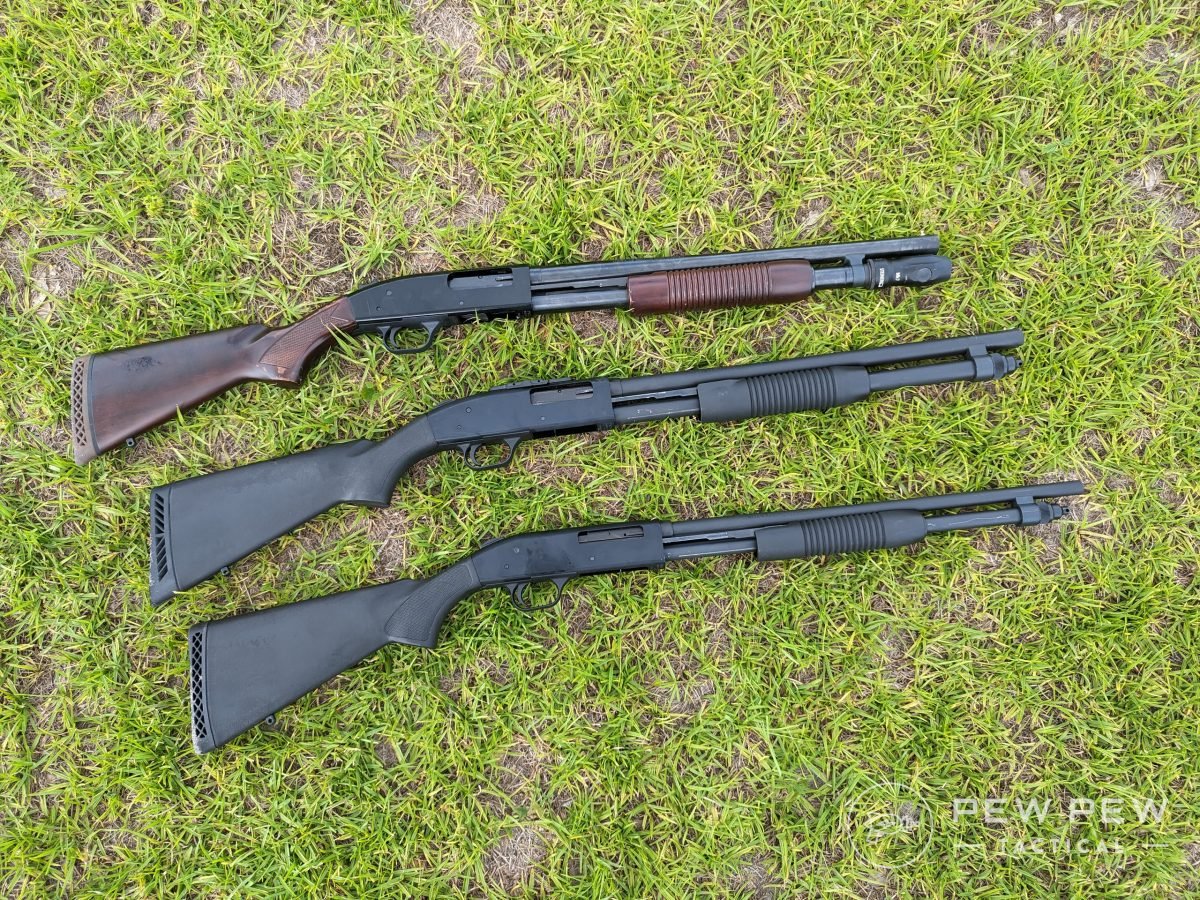
Let’s find out! We put these three side-by-side in a head-to-head comparison, with live fire shoot, to determine if the smaller shotgun shells are a viable alternative to the mighty 12-gauge.
So, keep reading to see what we discovered in testing!
Table of Contents
Loading…
How Shotgun Shells Work
Before we get too far, let’s talk about how shotgun shells work.
Gauge is an old measurement that relates to the diameter of the bore and how many lead balls of that sized diameter would create one pound.
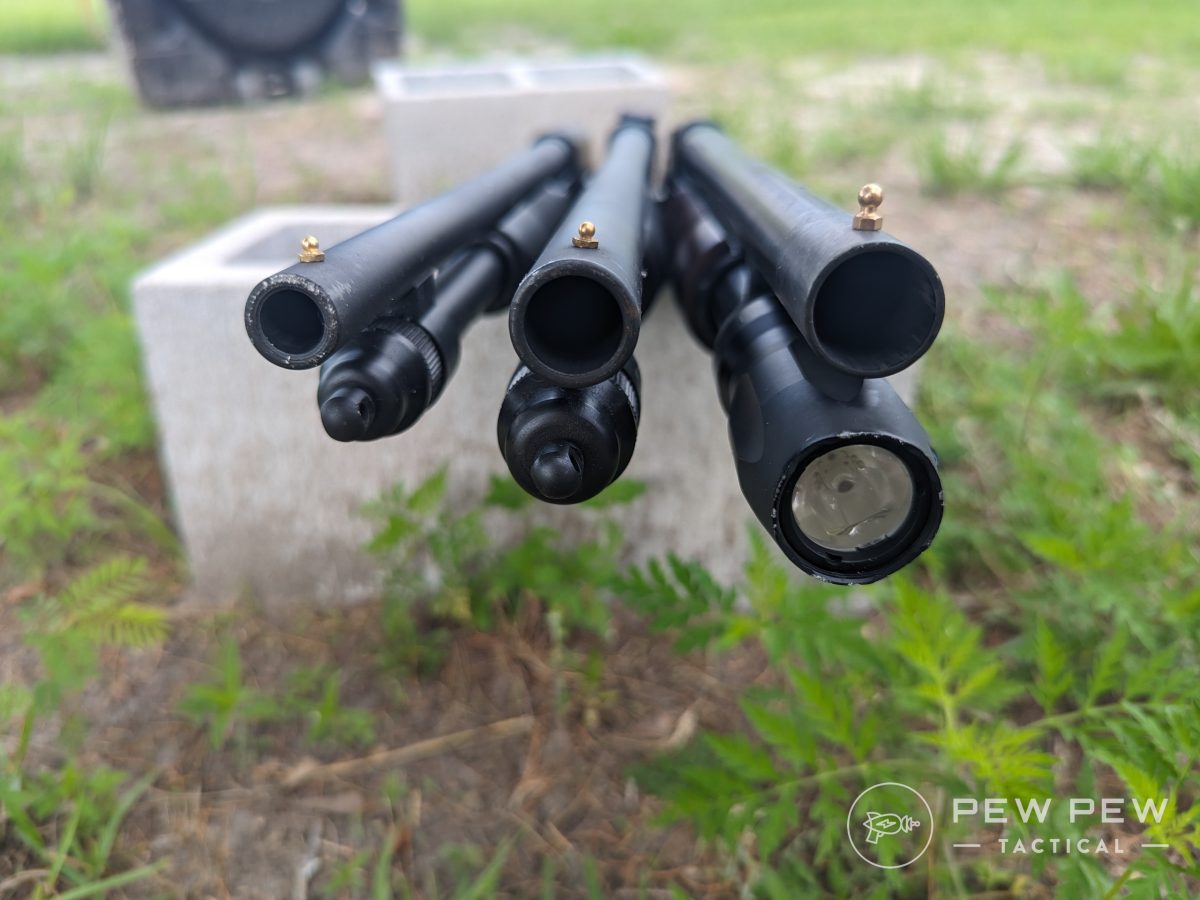
To create a pound of lead in 12-gauge, you would need 12 lead balls the size of the gun’s bore. For 20-gauge, you’d need 20 balls because the bore is smaller. As for .410, we don’t use gauge but rather fractions of an inch — much like how we measure standard handgun loads.
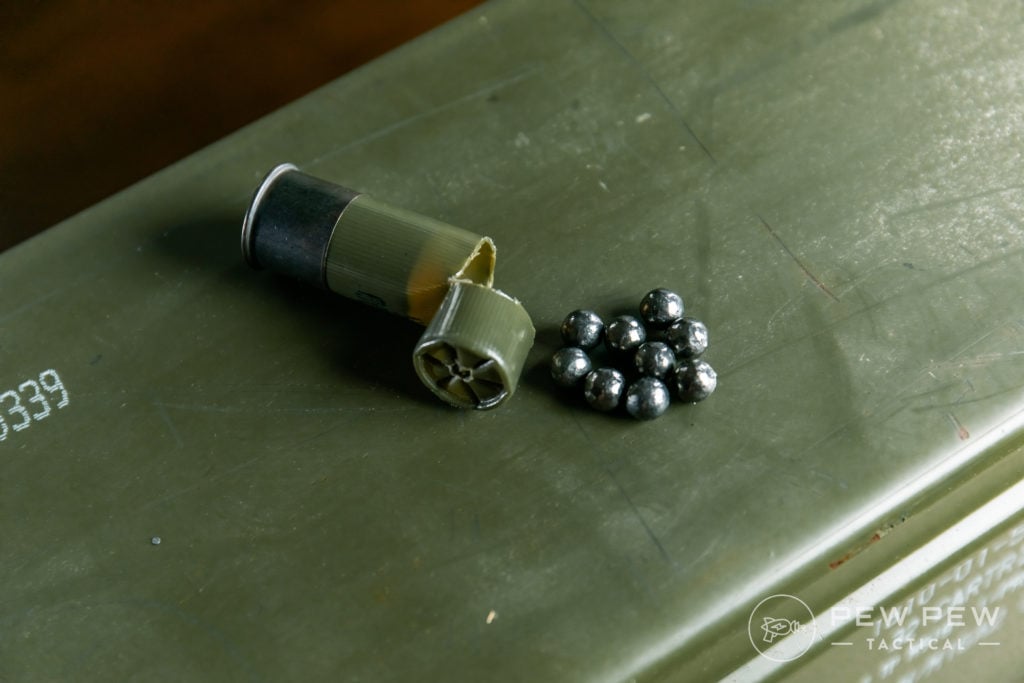
Basically, gauge number (12, 20, etc.) is inversely related to the size of the shell. Therefore, 12-gauge is the biggest, followed by 20-gauge and eventually the wee little .410.
A bigger shell holds more shot. Shot is the term used to describe the multitude of pellets inside the shotgun shell. In the defensive world of shotguns, we have two viable options: buckshot and slugs.
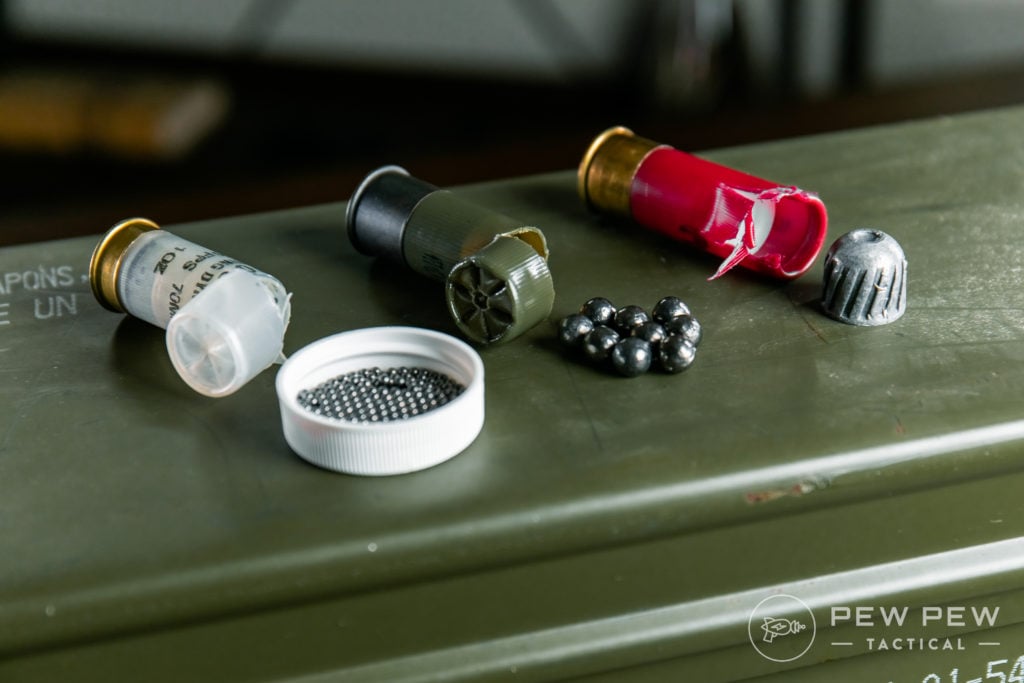
Buckshot loads use fairly large pellets, ranging from the .24-inch-per-pellet No. 4 buckshot to the .36-inch-per-pellet 000 Buckshot. (Pronounced Triple Aught.)
On the other hand, slugs are large, heavy, solid projectiles. Slugs extend your effective range, but for home defense, that’s not needed. Slugs are much more likely to over-penetrate a target.
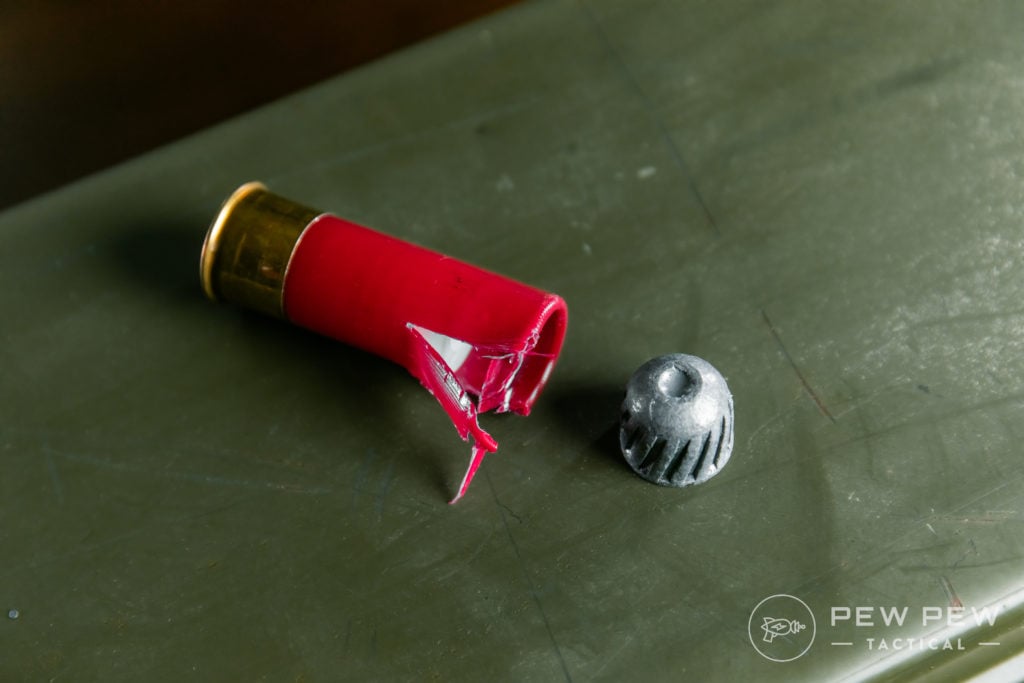
Buckshot is typically the best defensive option for inside the home since a shotgun’s lethality comes from the multitude of projectiles that hit the threat per trigger pull. The larger the shell, the more pellets it can contain. Each shot delivers multiple pellets on contact, making them very effective for self-defense at close ranges.
12-Gauge vs. 20-Gauge vs. .410 Bore
12-Gauge
Shotgun Ammo in Stock
12-gauge cartridges originated in the early 1800s and, over time, rose to dominance for shotguns.
While they are the largest popular gauge, that wasn’t always the case. In the late to mid-1800s, they were considered a good compromise of power and portability compared to the era’s 8- and 10-gauge guns.
The most significant benefit of choosing 12-gauge is the number of options available. 12-gauge loads come in various sizes, from mini 1.75-inch shells to mighty 3.5-inch loads. But the most common choice for self-defense is a 2.75-inch round.
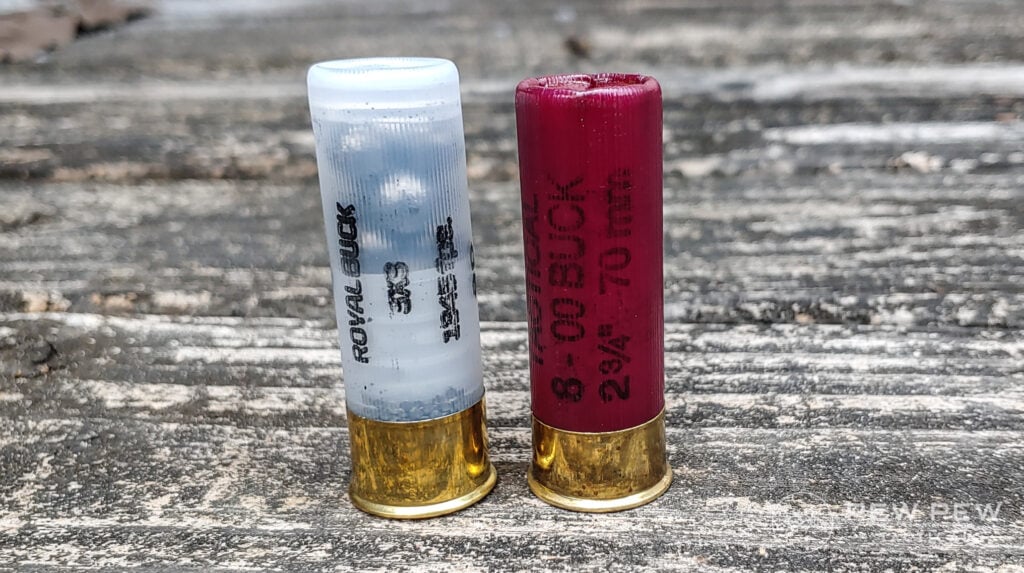
12-gauge shells come in a wide variety of shot sizes. For defensive use, the most common is the 00, which holds eight to nine .33-inch pellets. The standard 00 buckshot load is the most common, but shotgunners will argue for their favored buckshot flavor.
One massive advantage of 12-gauge is the sheer number of purpose-built tactical loads. These include low recoil loads, tactical slugs, and more. Loads like the Federal FliteControl buckshot provide the tightest patterning buckshot load available, and it’s my choice for home defense.
In the defensive shotgun market, 12-gauge guns also rule. Finding a 12-gauge pump or semi-auto in your favorite flavor is easy. I can’t say the same about the .410 and 20-gauge.
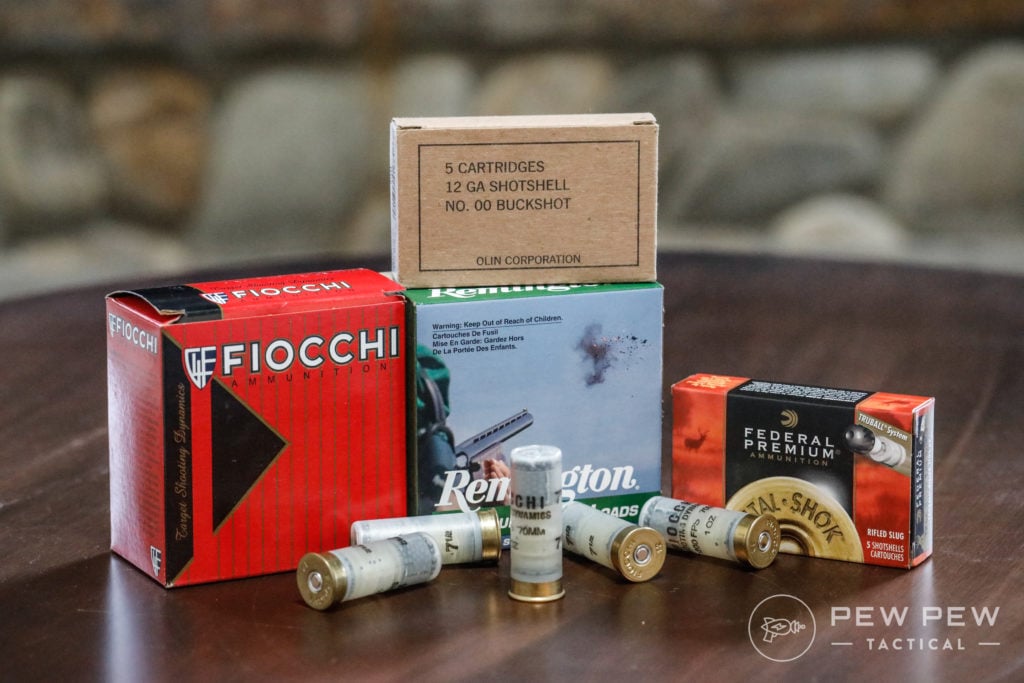
The 12-gauge offers users a lot of lead per trigger pull. With all that lead, we see substantially more recoil than .410 and 20-gauge loads. (I’m one of many shotgunners who’s in an abusive relationship with recoil.)
Other common complaints include the weight and size of these guns. They are big and often heavy. They certainly aren’t egalitarian weapons like the AR-15.
20-Gauge
20-gauge originates from the United Kingdom and dates back to the days of muzzleloaders with .615-inch diameter bores. The 20-gauge shotgun gained popularity in the United States in the 1950s as a lower recoil alternative to the 12-gauge. It’s remained a popular option ever since.
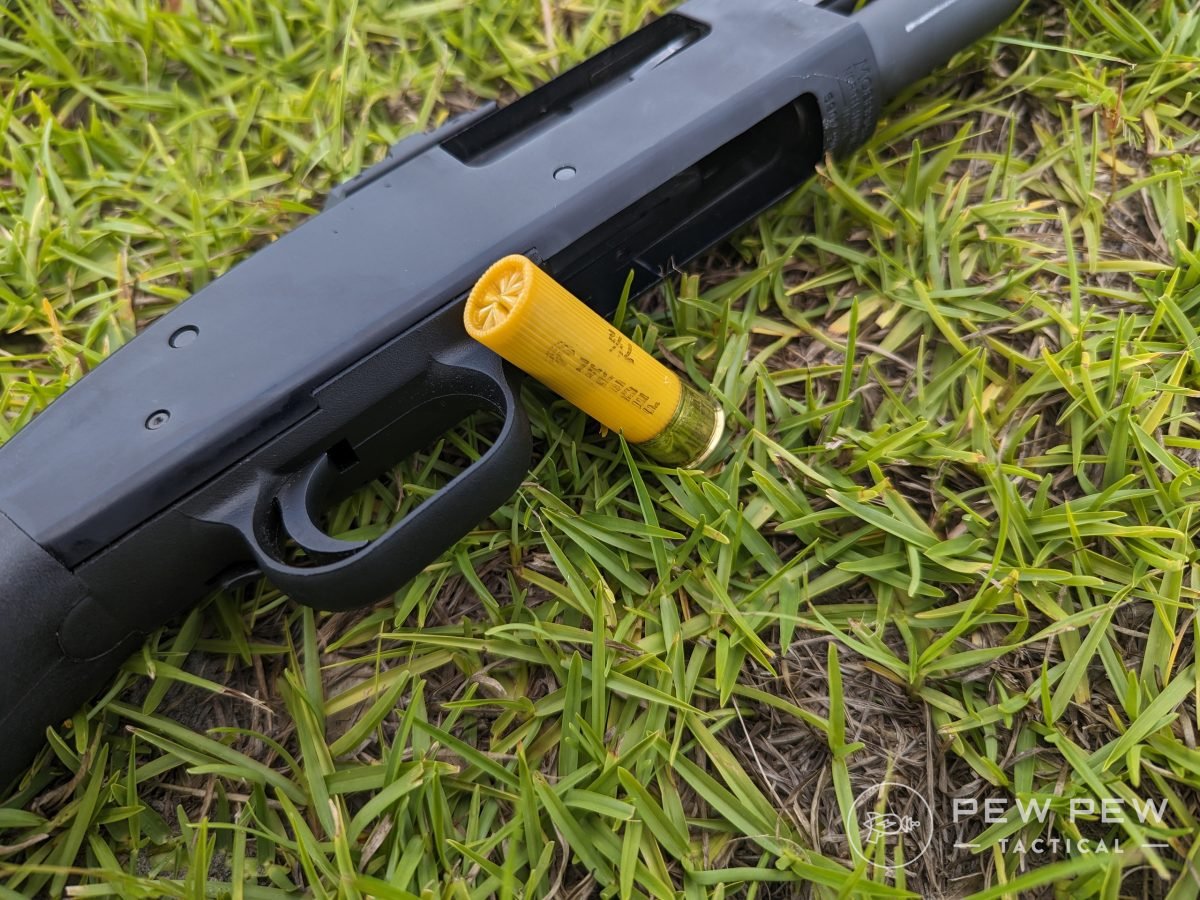
The gods of the gauge have blessed the 20-gauge with two major benefits — lighter recoil and a lightweight gun. This makes it much more attractive to smaller shooters or just people who don’t have a masochistic mindset toward recoil.
But with lighter recoil and a smaller shell, we do get less of a payload. To be entirely fair, it’s not that much less of a payload. You can still get a two ¾ inch shell with nine pellets.
The difference comes from using the slightly smaller Number 1 pellets rather than the 00 pellets. Number 1 pellet scan still penetrates deep enough to reliably reach the vitals of a threat.
Our doorway darkens when it comes to options. 20-Gauge ammunition doesn’t have many options available for self-defense. Winchester makes a tactical load, but it’s just their standard 20-gauge buckshot load in a black hull.
The tide has begun to change slightly, and Federal showed a FliteControl option for the 20-gauge at SHOT 2024. This is a 10 pellet number 2 load, and I can’t wait to try some and see how it performs. If it works, then the 20-gauge becomes an even more viable option for home defense.
There are also fewer options for 20-gauge defensive shotguns. As of this writing, I have a Mossberg 590, which is the best defensive 20-gauge shotgun on the market.
.410 Bore
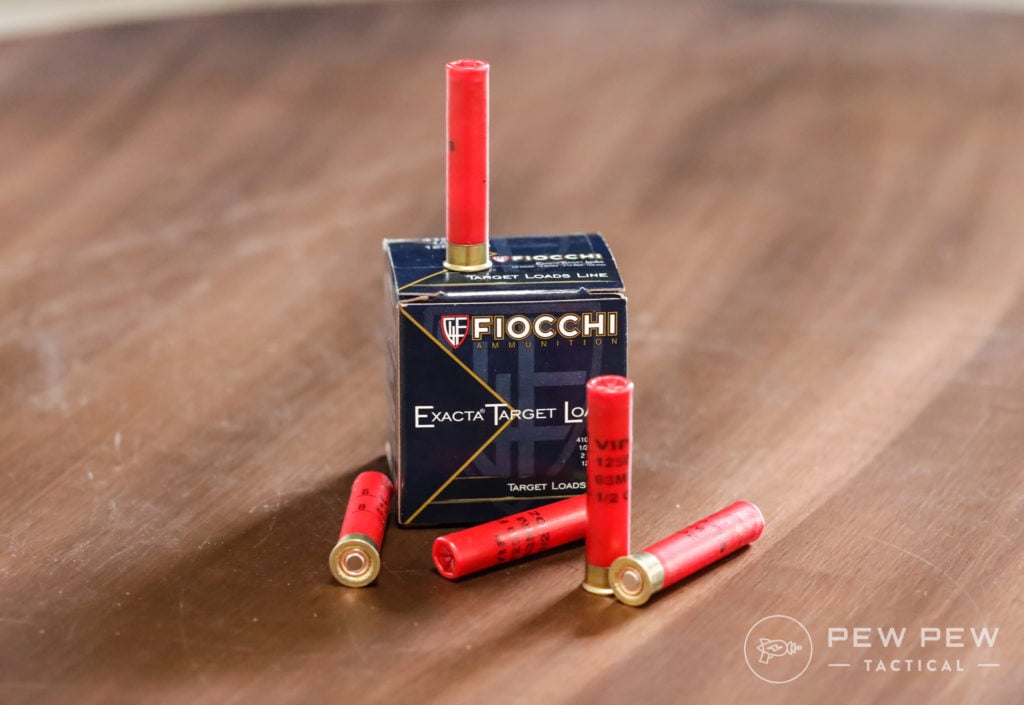
Oh, the wee little .410. It’s the caliber I started my adventure with shotguns in at the age of 8. I love the .410, but in terms of defensive use, it’s not the most loving option.
Like the 20-gauge, there are two immediate benefits — less recoil and lighter weight. These guns are so light the UFC would need to make a new division to accommodate them. A full-sized Mossberg 590 in .410 weighs less than 6 pounds, so it’s very light and easy to handle.
If we measured .410 in gauge, it would be 67.5 gauge. With a dedicated 3-inch buckshot load, I’d put the recoil at 5.56 levels. Maybe a hair more, but less than something like a 7.62x39mm.
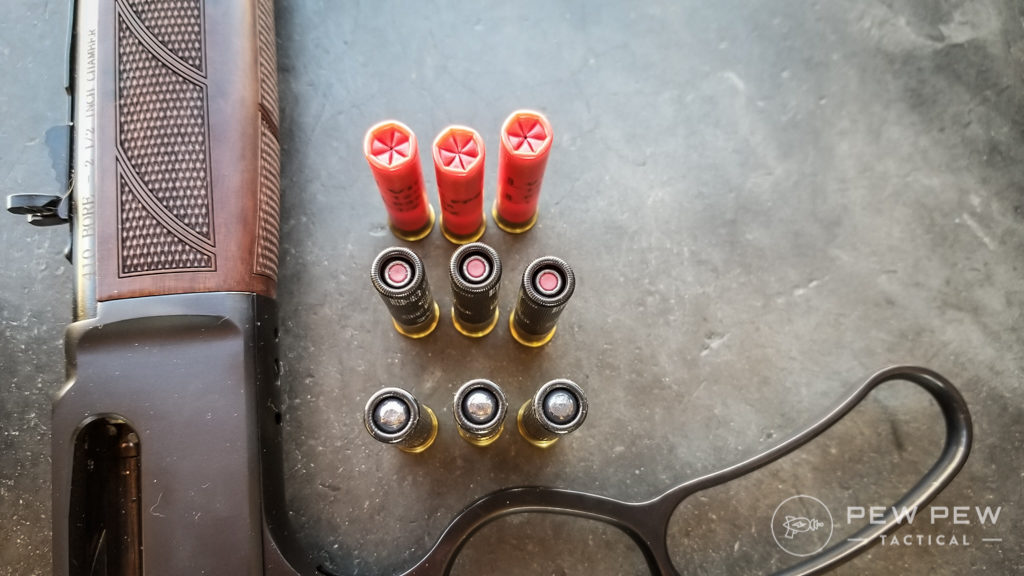
For a shotgun, it’s downright soft. The Gauge Gods were sacrificial with the .410’s payload. If you wanted a serious defensive .410, I’d point you to a 3-inch round with five 000 pellets. That’s the best you’ll be able to do.
It’s still five 9mm rounds per trigger pull, but it’s significantly less than the 12- and 20-gauge options. Speaking of options, you don’t have a lot with the .410. It’s limited and pricey.
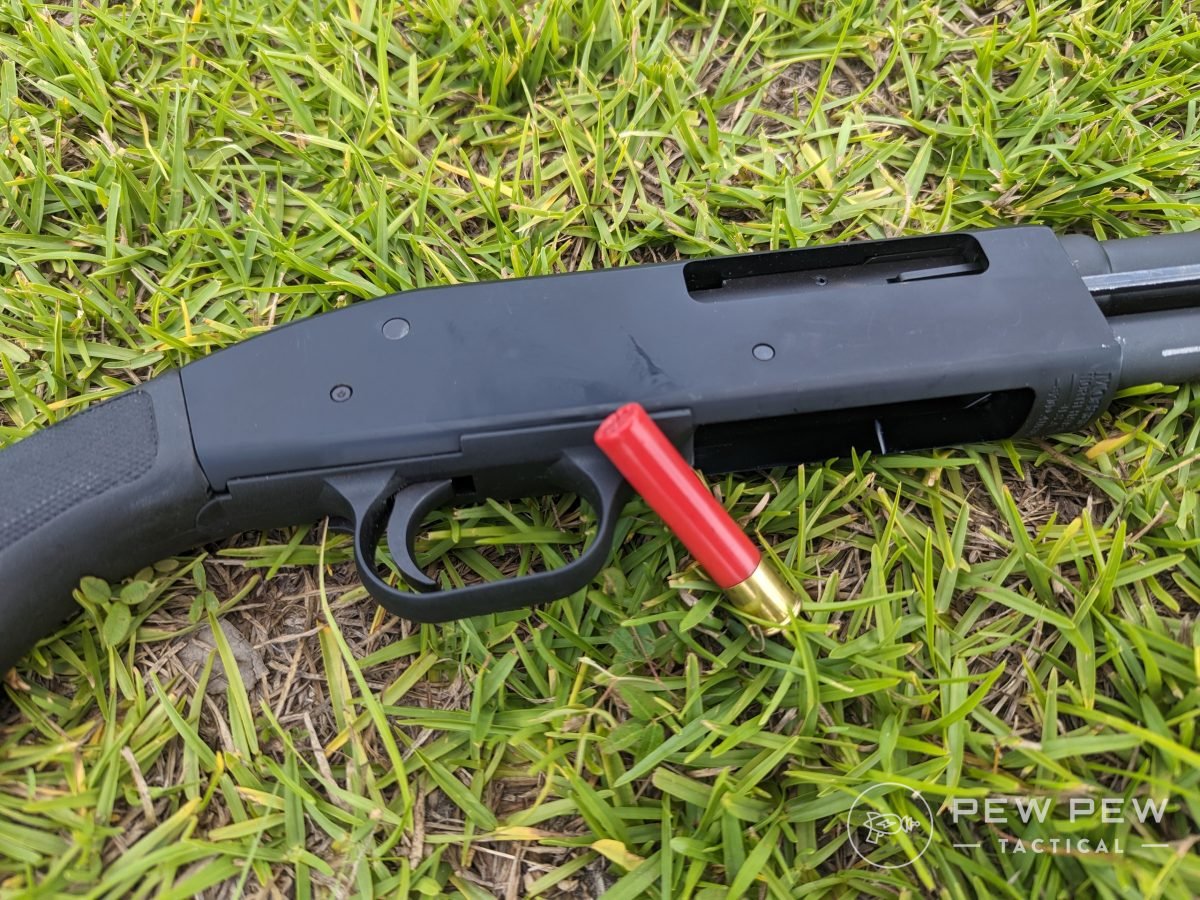
The .410 costs the same or even more than the premium defensive 12 gauge on a per-round basis. The scale factor isn’t in play because not that many people use .410 these days for hunting anything but small game and clay pigeons. The .410 comes in 2.5- and 3-inch varieties, unlike the other gauges.
The same goes for guns. Most .410s are designed for hunting, with very limited defensive options. For this test, we got a 590 in .410, which is easily the best defensive .410 out there.
Range Testing
We are basing this entire conversation on home defense. I wanted to test a 12-gauge, a 20-gauge, and a .410 defensive shotgun side by side through an objective series of tests to illustrate any potential performance differences.
To do so, I used the Lucky Gunner Shotgun Skills Test. Chris Baker designed the test with home defense in mind. This course of fire has four stages from 15 to 3 yards with 11 rounds per run.
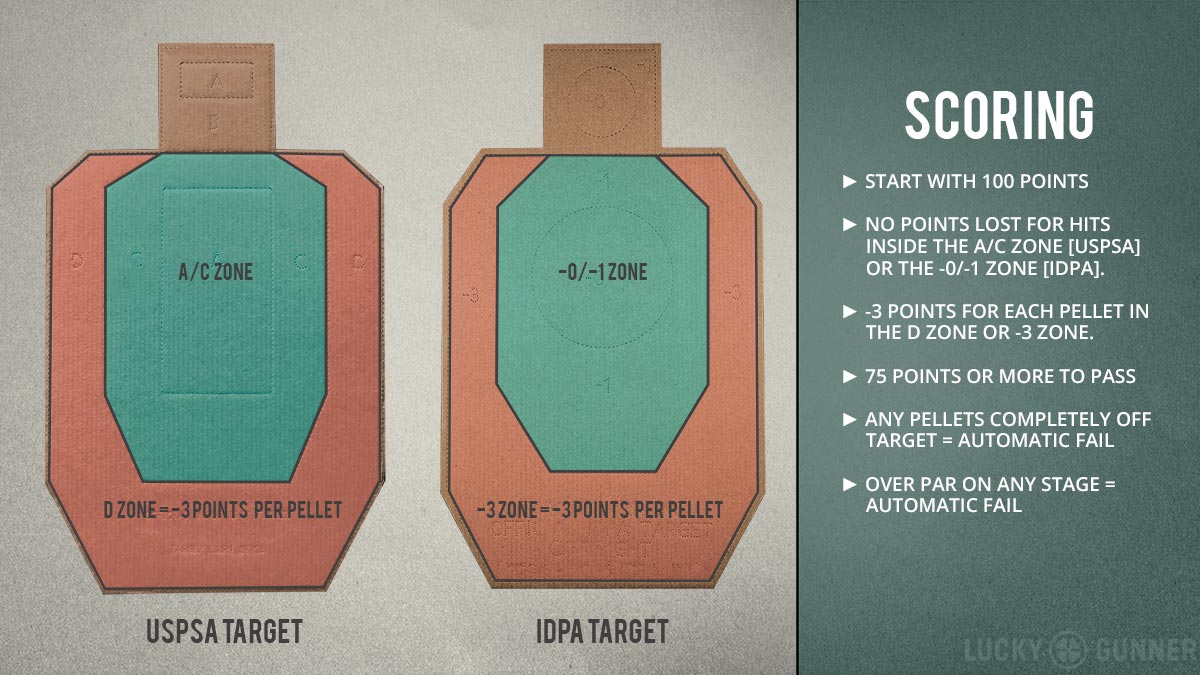
I blasted through this test six times with three guns in three different calibers. Each gun passed the test twice, and I took the best time for each run.
For testing, Mossberg sent me a Mossberg 590 in 20-gauge and .410. I tested that alongside my personal 12-gauge Mossberg 500. All three guns are relatively plain, and all feature bead sights, so it should be a fair comparison.
Stage 1: 15 Yards, aim and fire one round from the low ready.
| Round | Par Time |
| 12-gauge | .75 |
| 20-gauge | .73 |
| .410 bore | .76 |
I didn’t expect to see much of a difference here. Since the guns are one-round fired, it’s tough to see a difference between the various shotgun chamberings.
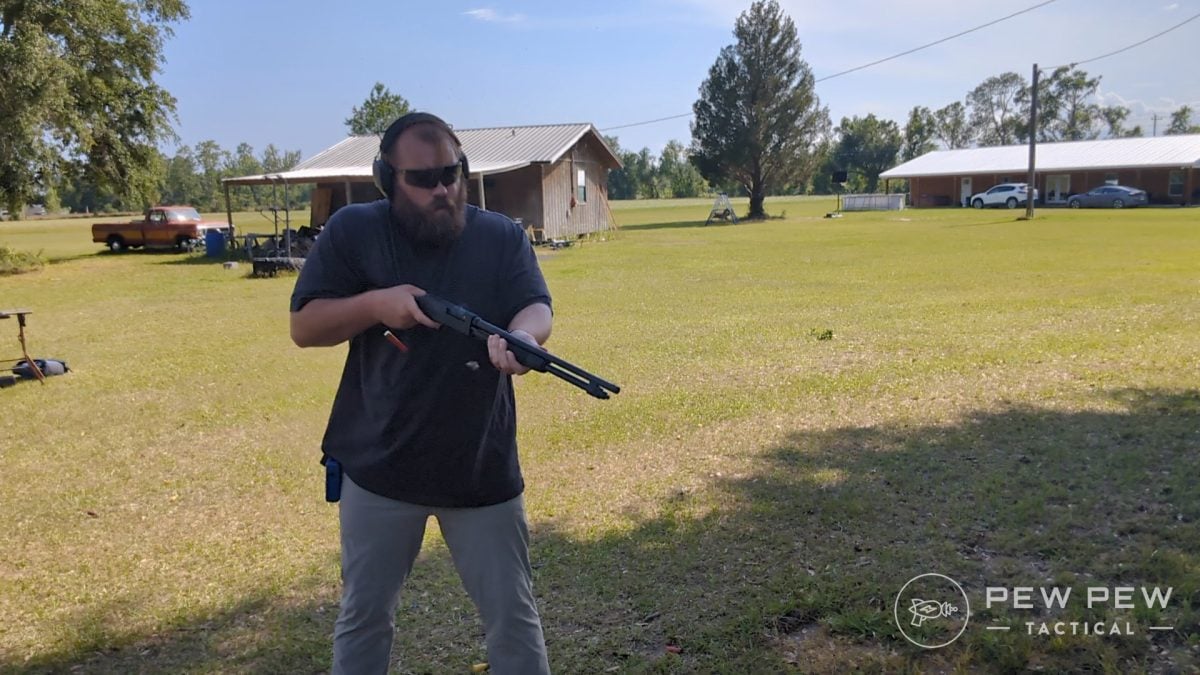
Stage 2: 10 Yards, aim and fire two rounds from the low ready.
| Round | Par Time |
| 12-gauge | 1.15 |
| 20-gauge | 1.13 |
| .410 bore | 1.18 |
This one perplexed me. I thought I’d see more of a difference in the times. The recoil does play a part here. I am an ardent practitioner of the push/pull recoil reduction technique, so maybe my recoil reduction techniques are more effective than I assumed and evened the playing field.
Stage 3: 5 Yards, gun is cruiser-ready with three rounds in the tube and lying down on a table or similar platform. At the beep, the shooter grabs the gun and fires the three rounds on target, and then emergency loads two rounds into the gun and fires them.
| Round | Par Time |
| 12-gauge | 8.17 |
| 20-gauge | 6.78 |
| .410 bore | 8.77 |
Look at this weird spread of times…with the winner turns out to be the 20-gauge in this drill.

Well, it’s complicated. I didn’t make any major mistakes with the other two shotguns. It just turns out the 20-gauge is the right compromise in low recoil and good shell size. The recoil is self-explanatory, but the shell size might not be.
I used port reloads for my emergency reloads. The .410 shells are small and awkward to grab and load. They want to flip around in the hand, and the smaller .410 ejection port is harder to find. Meanwhile, the 12-gauge offered more recoil. Out of all three, the 20-gauge was just easy to grab and load into the gun.
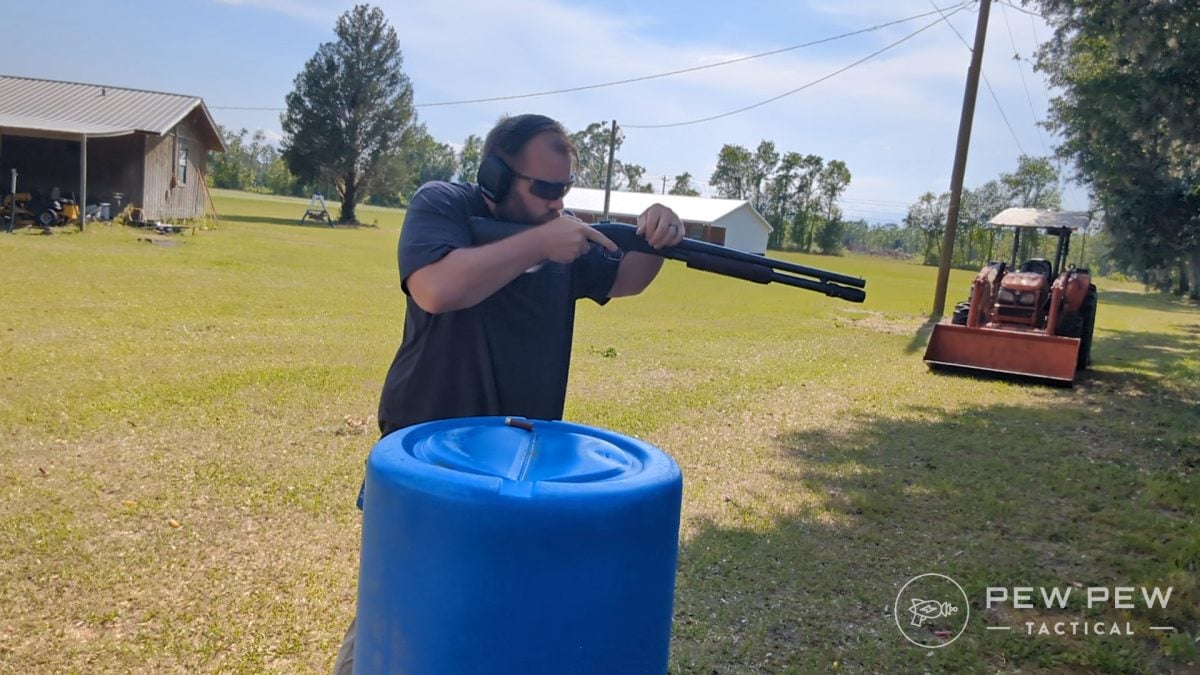
A flaw in my push-pull method comes from releasing the push/pull tension and grabbing a shell, shucking it in, and shooting. I had to release the tension to grab the shell, and I lost that excellent recoil mitigation, which increased my time between shots and ultimately slowed my time down.
I never considered that shell size would be a factor.
Stage 4: 3 Yards, start with the gun at the low ready in a compressed firing position. At the signal, fire two rounds in the compressed position and take a step back by shouldering the gun and firing one headshot.
| Round | Par Time |
| 12-gauge | 1.99 |
| 20-gauge | 1.93 |
| .410 bore | 1.79 |
Here is where the .410’s super-low recoil became a real asset. The compressed firing position is awkward, so the lighter weight, lighter recoiling gun offers a major advantage. The gun recoils so slightly that I don’t even need to place it on my shoulder to control it.
Range Testing Results
I thought I’d see a much bigger difference between the three loads when shooting the skills test. I imagined faster times with the smaller 20-gauge and .410, but that wasn’t always the case.
It turns out that recoil mitigation matters more than caliber.
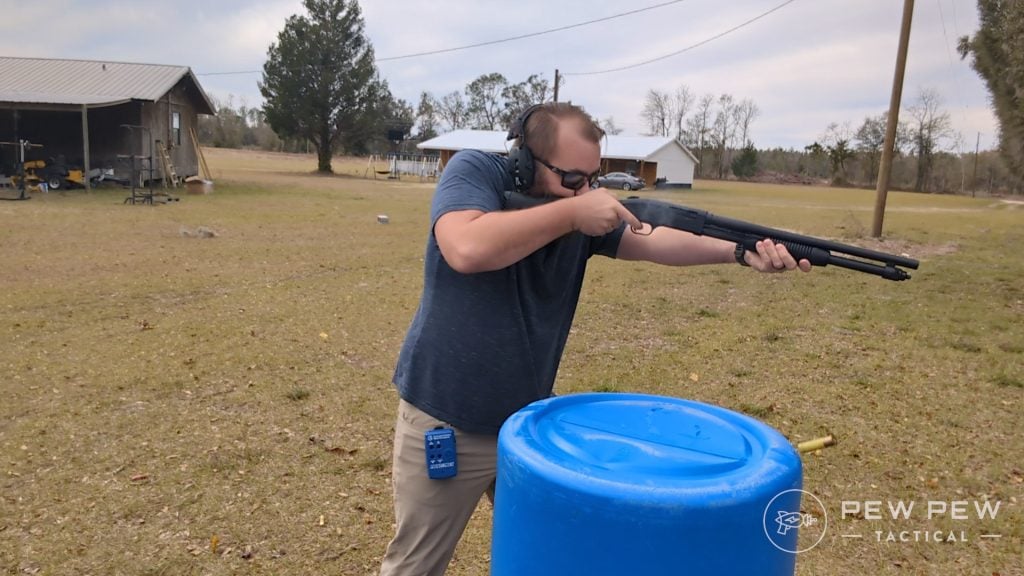
Beyond the Range
Beyond the range skill test, I worked various shooting and reloading drills. After one long day, I came to a few conclusions throughout my evaluation.
Reloading
As we saw in Stage 3, reloading can be an exciting phenomenon. Loading the 12-gauge and 20-gauge felt ergonomic and intuitive. The .410 was a pain.
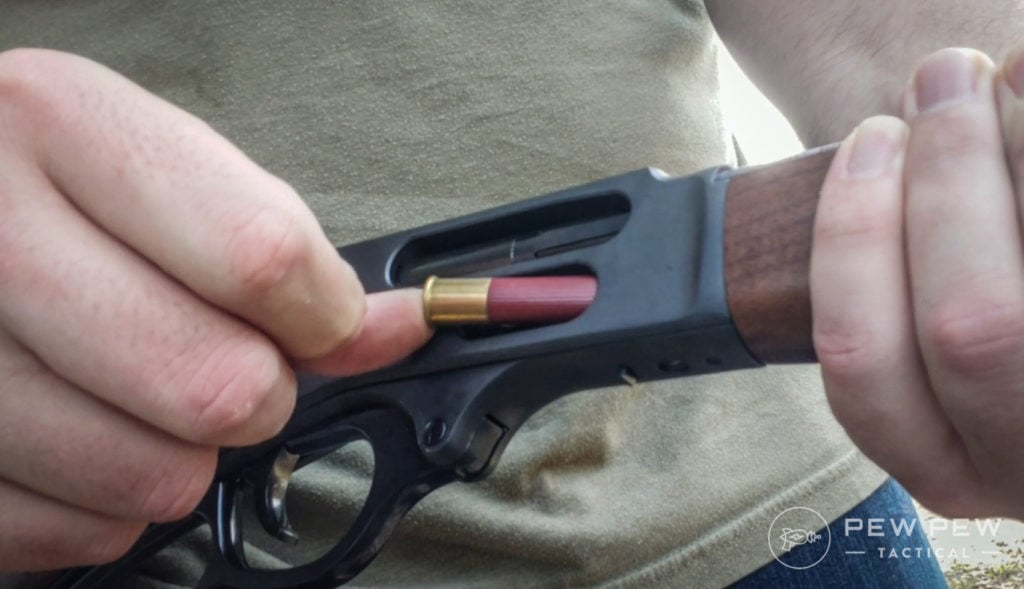
The ratio of shell size to receiver is skewed with the .410. It’s very easy to get the mini .410 shells stuck on the side of the receiver near the magazine tube opening. They get hung up and require more manipulation to load quickly.
Push/Pull & Recoil
Push/pull does wonders for reducing shotgun recoil. I’m not a master of the technique, but I’ve gotten pretty good at it.
After a day of shooting these shotguns, I noticed I got much more tired of shooting the 12-gauge with a proper push/pull technique than other guns. My technique starts to suffer after the 50th round of 12-gauge buckshot.
I didn’t find this to be true with the 20-gauge, and the .410 is more like a burp gun than a shotgun.
Patterns
I patterned each gun several times, and the .410 always had the broadest patterns. It has the fewest pellets but the most spread. The 2.5-inch loads with three 000 pellets patterns are the tightest and are comparable to 12-gauge and 20-gauge patterns. (Excluding Flitecontrol.)
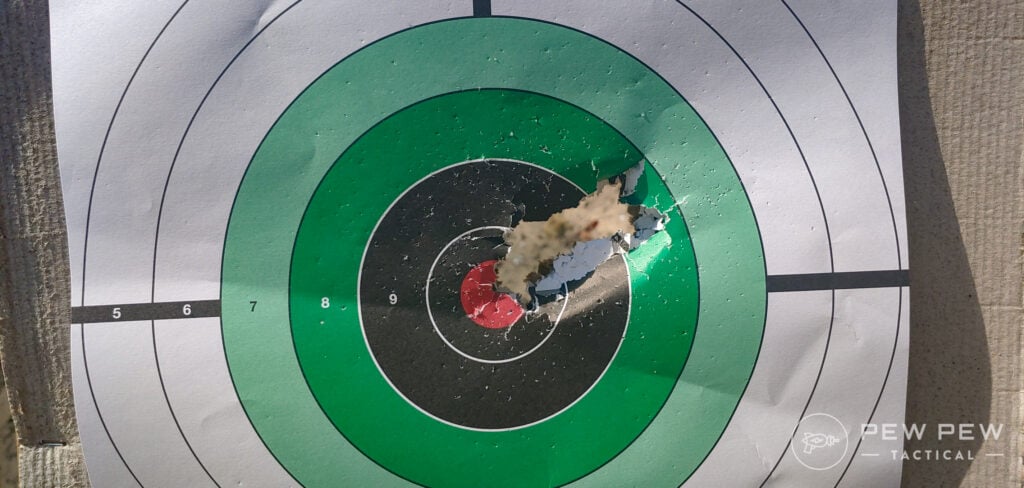
Learn more about patterning in our patterning guide!
Home Defense Winner
As lovely as it would be to make a declarative statement about who won this contest, it isn’t possible. Different strokes for different folks and different needs for different shotgunners.
So, where does this leave us? With some recommendations based on platform…
12-Gauge: Semi-Auto Shotgun
If you want a defensive 12-gauge shotgun, we live in the golden age of semi-auto 12-gauge shotguns.
Benelli, Mossberg, Beretta, Savage, and more offer a glut of modern semi-auto options. Semi-auto shotguns slice through the challenge of pump-action.
The big problem with 12-gauge shotguns is the recoil, but a semi-auto action significantly tames that.
Getting new shooters behind a 12-gauge can be challenging, but the semi-auto with the right ammo offers a cheat code for success.
We have specific recommendations for the best models in our guide to the Best Semi-Automatic Shotguns.
20-Gauge: Pump Action
The 20-gauge hasn’t got the semi-auto love of the 12-gauge. While some semi-auto 20-gauges exist, very few are tactically oriented.
With the 20-gauge Mossberg 590 release, it’s tough not to recommend a pump-action in 20 gauge. The 20 gauge already has less recoil, but you could trim sporting rounds into reduced recoil loads and cut that recoil even more.
These reduced recoil loads might not function well in a semi-auto shotgun but will sail through a pump shotgun.
For more on pump-action, check out our guide to the Best Pump Actions [Home Defense & Hunting].
.410 Bore: Firearm-Type Weapon
You can get a Mossberg 590 in a .410, and it’s a good choice, but I think it’s overkill. Instead of getting a full-sized stocked shotgun, you should consider a stockless firearm, like the .410 Shockwave.
Something like the Shockwave offers a smaller, even lighter platform that’s easy to handle. The recoil is so low you don’t need a stock to control the gun.
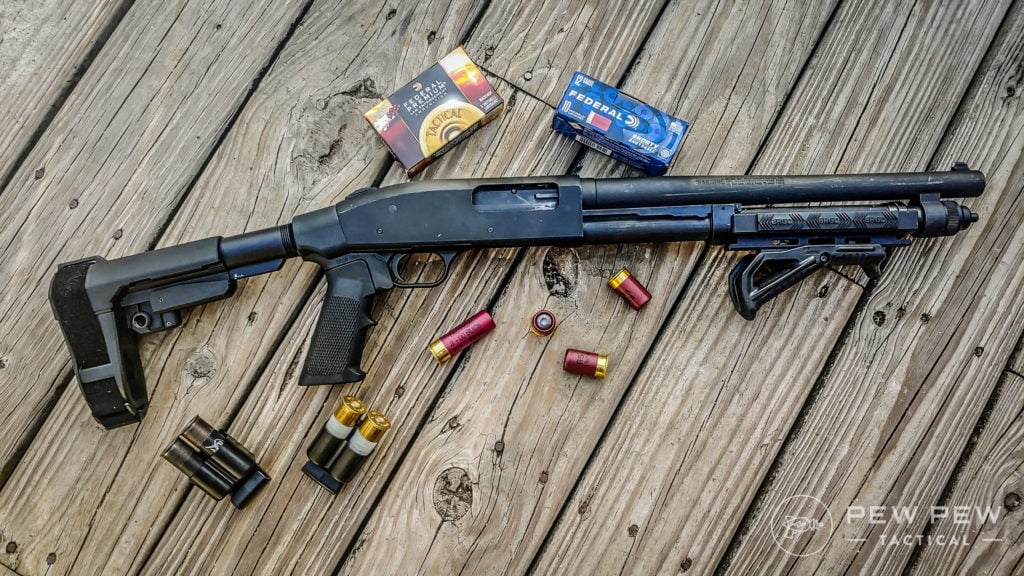
It’s perfect for close-range use, and the little gun works well at .410 buckshot ranges. If you need a lightweight option, this is as light as a scattergun gets.
Need more .410 Bore? Check out our review of the Mossberg Shockwave and the Henry Axe.
Final Thoughts
Shotguns are a thinking man’s weapon. It’s not as simple as loading a magazine with JHPs and preparing for the world. You need to train, shoot, and experiment to find the right option for you.
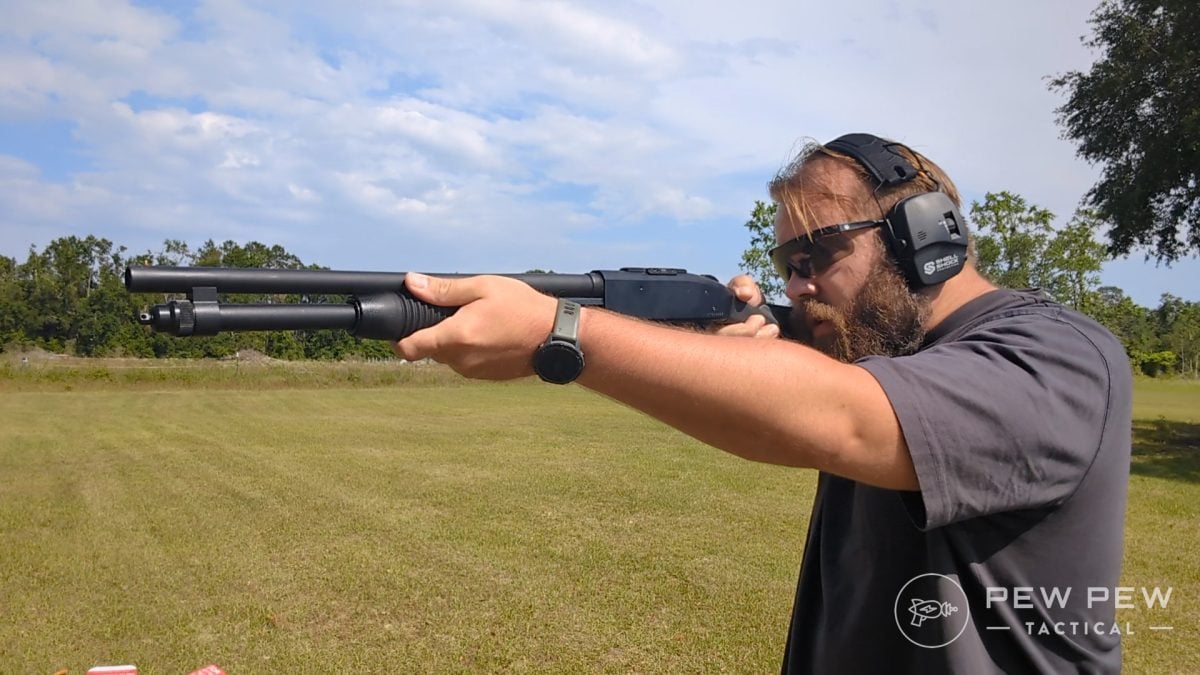
I use a shotgun because I want a big, hefty payload that patterns tightly. When I pull that trigger, I want eight 00 pellets, so 12-gauge is perfect for me. That said, I’m also 6’5” and 280 pounds, so my experience isn’t everyone’s.
Hopefully, we’ve helped provide you with enough data to make an informed decision on what would work best for you and your preferred shotgun platform.
What’s your preferred gauge/caliber? Let us know in the comments below! For the best shotguns out there, check out our guide to the Best Home Defense & Tactical Shotguns.

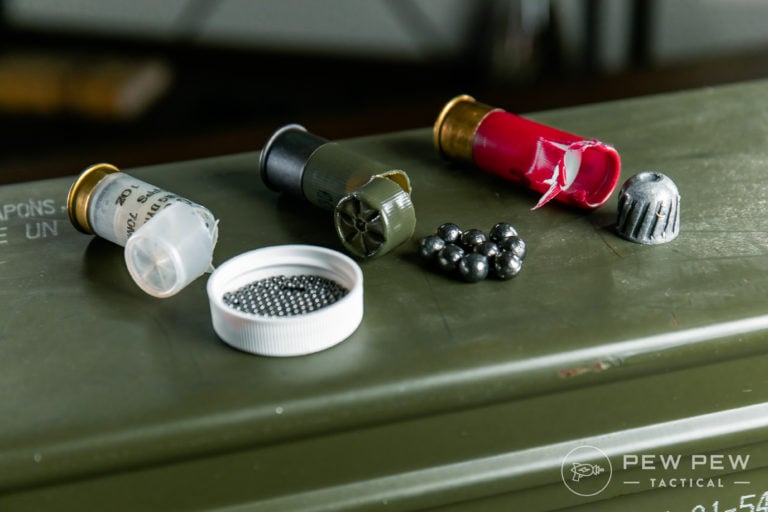
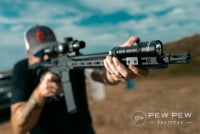



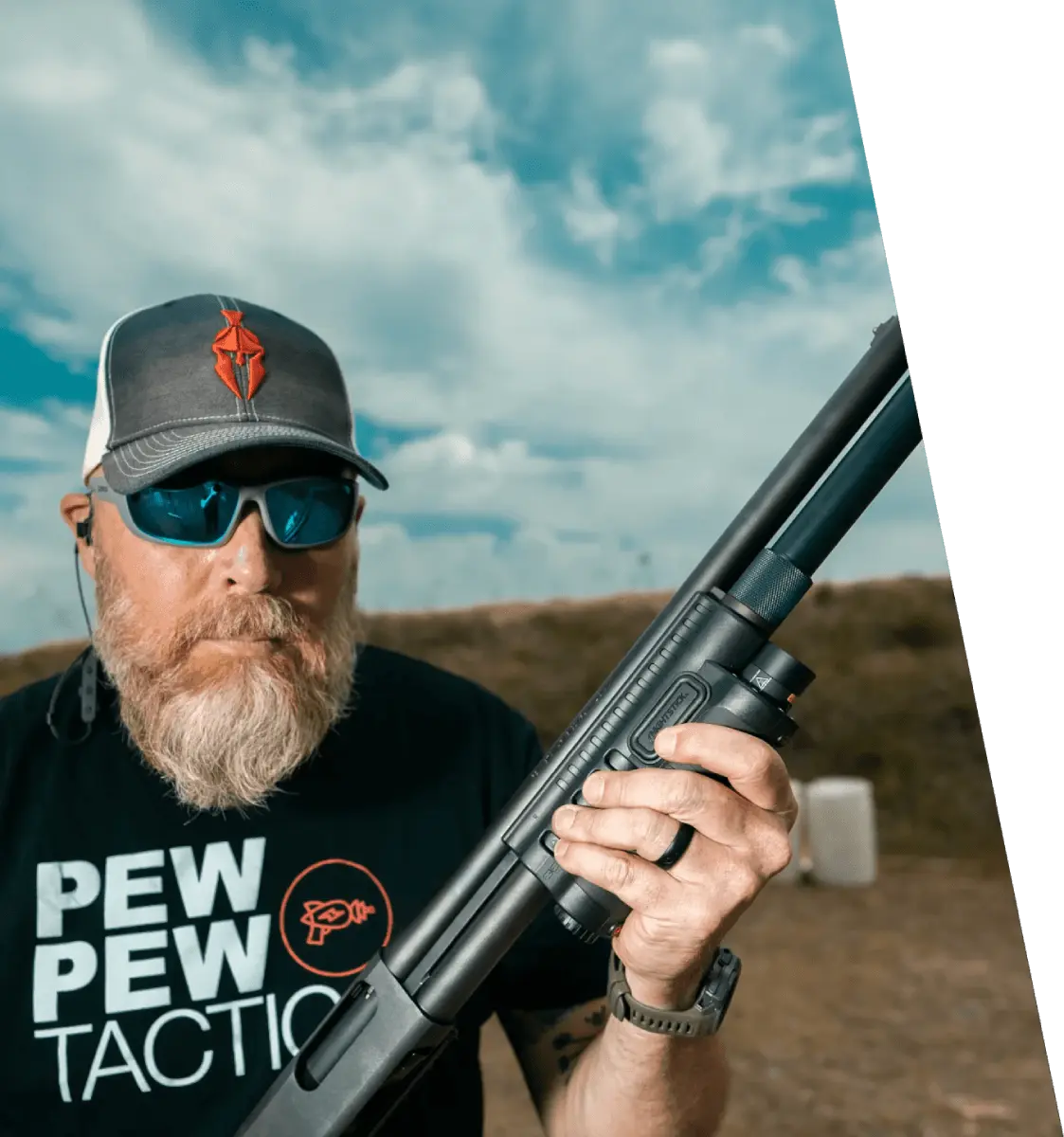

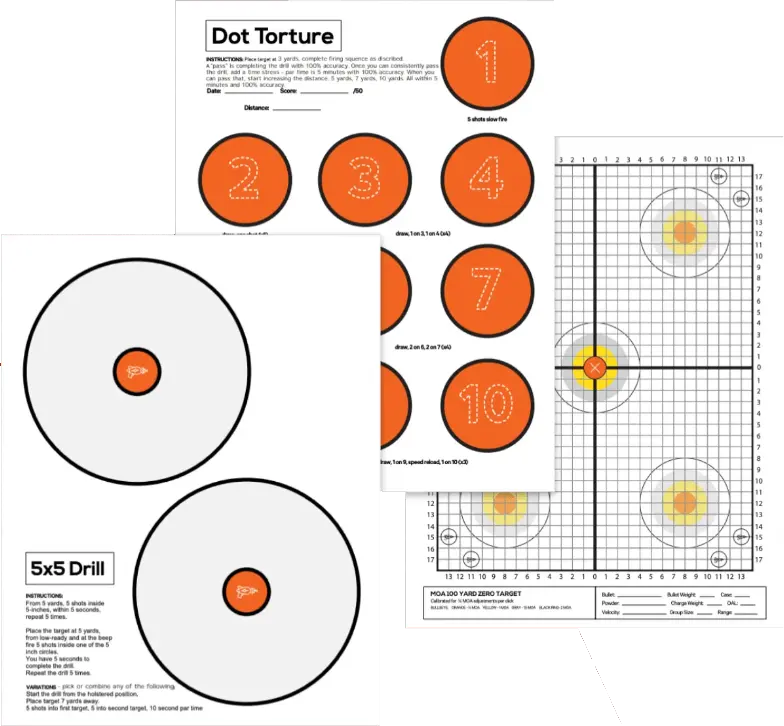
24 Leave a Reply
public defender rules but yea same concept..
I have an ATI semi auto .410. It's pretty awesome. Throw in some Hornady critical defense ammo, and I'll take that as easily as my 590 retrograde
yo dude..you like that ati? They cost around $300? Thinkin about buying one and a judge for back up being same caliber and all but I watched a fat boi video with too many jams on that model. Hows it jammin on you? Im sending an SDS 12ga bullpup back for a replacement. It was jammin like a champ day one and even flew apart. I thought it was a turkish but fiund it was a chinese fck americans knock off. They will replace it with a turkish sds tbt. Spose to be much better. but yea whatever.. So is that ati 410 good and reliable? thx
I’ve got a Taurus Judge Toro. I know a lot of people think it’s a joke gun. But 5 rounds of Federal 000 buck at defensive distances should be more than enough to stop a threat.
I have never used a shotgun. I am looking for a home/away gun. Does barrel length have anything to do with shotgun choice.
Conn
sure.. longer the barrel tighter the pattern speed and power. For defense. shorter is
more agile. A bullpup has bith adva tages since the barrel is inside the stock.. its long but looks short overall.
Most people seem to have bigger houses than I do.
I have a tiny house on a tiny lot with neighbors’ outer walls 2 yards away on each side, neighbor’s front stoop maybe 30 yards across the street.
12 and 20 shotguns would be overkill.
I have a 410 / 45 and a couple of 22LR handguns - a revolver and a semi stashed around areas that might be vulnerable, then a couple of 9mms - revolver and a 1911 for the bedroom.
I hope I never have to use any of them.
The 20 is the best all around for home defense IMHO. The 12 is major overkill for defense. Just consider that a 20 has TWICE the energy of a .44 Magnum. If that doesn't stop someone, I don't know what will. Plus pretty much anyone can handle and shoot a 20.
Travis, awesome article.
Two years ago this coming December, three units responded to a domestic violence call where male half was armed with a semi-auto handgun. Long story short, during the ensuing gunfight, one of the officers put two 12 gauge slugs into male at a measured distance from the barrel of ten feet. Neither slug exited the chest cavity. Firearm used was the Remington 870 duty issued.
My go to for last several years has been the VR80. I use the Winchester 00Buck and the Black Aces Tactical slug.
Rock Island now has the VR82 in 20 gauge.
Keep up the great articles!
I am a 20 ga guy !! Good article
No mention of the 16 gauge. Ammo still available maybe not in stores but plenty online. Inherited one years ago and enough ammo to last a lifetime and then some. Sweet 16 is awesome.
For all of the talk about Mossberg, I can't believe you didn't mention the SA-20 Tactical. It literally has "tactical" in it's name! It's semi-auto, 20 gauge, and has a 20" barrel with a pistol grip. I have one and it's a blast to shoot (no pun intended).
For home defense there are new rounds that contain a slug or a slug and buckshot. I tried them at the range, and they work just fine. The shorter mossberg shot gun with the birds head handle is maneuverable, and recoil is very tolerable. This will do the job.
I have a KSG410. Sweet little shotgun, 10 rds, pump. At 82 I needed something smaller and lighter for home defense. Really like it.
Anything you can mention about .410 Defender rounds used in pistol firearms? Like S&W Governor, Taurus Judge, or even Bond Arms Derringers?
SAFETY: Since you were reviewing both at the same time, I think you should have mentioned a 20 gauge shell will fit in a 12 gauge shotgun. Be careful not to mix.
As an LEO, either a 12ga Benelli M1 Super90, or a Beretta 1201FP was a constant companion on patrol. Many years later, I've switched totally to 20ga for all hunting and defensive uses: Benelli M2, Stoeger 3020 Tactical (M2 clone), and an RIA VR82 with 10rd mags.
The best gauge/caliber is and always will be individual to the shooter and the one they can put the most rounds on target with. As a very large man, (6'5", 440), 12 gauge doesn't effect me much, my wife, however, hates it with a passion. For her, .380/9mm or an AR platform is easier to wield. For me, full framed platforms, like a 12g, fit me and I can shoot them well and put rounds on target
I have An Ithaca model 37 Deer Slayer 12 Ga Pump. It’s purchased it at a Sears Robuck Store in 1962 so predates current restriction on cycling. I can hold the trigger and it fires after every pump. With it I can out shoot most auto loaders and at just over 6 lbs. it is fast to maneuver. It will kick your butt, but at 78, I still have a love for this gun and I guess the pain, ha, it is a bottom ejector and easily loads through the bottom and I often palm a round and it just seems to naturally swallow it. Of course they are hard to find now and the new ones require a trigger pull for each pump. It is of course only for 2-3/4” rounds but you used to be able to get magnum rounds for duck & Geese hunting and in 00 buck for dear. Being an ammo border, I still have a few of those around. In the dark there can ba nothing scarier than hearing a good old 12 ga pump rack a round. If you were on the receiving end, it might make you pee on yourself.
How about the typical double barrel that most country homes have? 20gauge or 410 in about as simple a shotgun as possible. You get two shots before reload which is pretty simple with a sleeve of 6 on the stock. Besides, how big a hole do you need?
Perhaps this wasn’t thought to be within the scope of your article, but one additional consideration for .410 in self-defense would be a .410-chambered handgun, e.g., the Taurus Judge or S&W Governor.
Yes, yes, bigger is better. We get it.
The answer is: Any of them. There are few to no criminals who won't turn tail when they hear the sound of a shotgun being chambered! Has anyone ever read a news article that ended in "but if the victim had used a larger caliber shotgun, he might have been okay"? No, because it's never happened.
Wildcard! 10 Gauge! If you can’t shoot it, grow a pair! But in all seriousness, I’d love to see an article about the best 10 gauge shotguns. It’d be a short list, but it’d make waterfowl hunter more aware if their options.